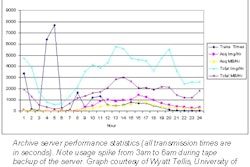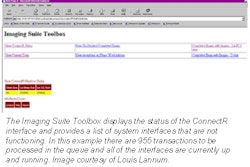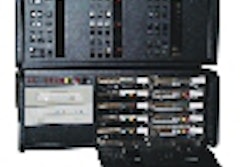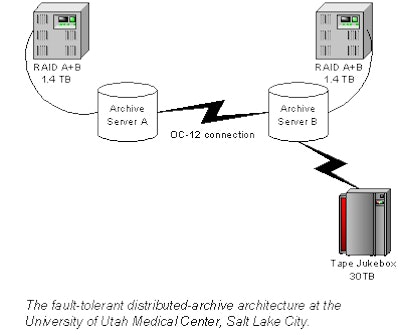
SALT LAKE CITY - There are a lot of things that can go wrong with a PACS network. Data lines can be severed, workstations can crash, databases can be corrupted, modalities can take a holiday -- the list can seem endless. However, PACS administrators can design at least one component, the distributed archive, to be nearly failure-proof.
Rebecca Mendenhall, a representative of Cleveland, OH-based Marconi Medical Systems, presented a distributed archiving architecture strategy at the Symposium for Computer Applications in Radiology (SCAR) Saturday.
The reasons for implementing a distributed archive are compelling. In addition to providing on-line redundancy and fault tolerance for an image archive, a distributed archive can be configured to provide increased load capacity during times of high demand. And, as any administrator who has taken a call from an irate physician waiting for an image to be downloaded will tell you, higher load capacity translates to happier PACS customers.
Mendenhall and her team came up with a vendor-independent hardware and proprietary software combination in their design of a fault-tolerant distributed archive at the University of Utah Medical Center in Salt Lake City. The group created a two-archive server hardware infrastructure managed by an IntelliStore (Marconi) image-archive software layer.
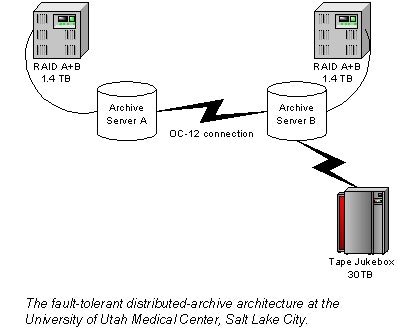 |
Each server is attended by its own redundant array of inexpensive disks (RAID) unit that mirrors the data on both servers. This provides an extra degree of redundancy, for if one RAID unit and one server fail, the other RAID unit contains the data of both servers. The long-term storage needs of the system are handled by a 30 terabyte (TB) tape jukebox that is connected to one server.
Mendenhall said the architecture provides three levels of fault tolerant capabilities:
- A duplicate work capability only
- A duplicate work and short-term image-cache capability
- And a duplicate work capability, short-term image cache, and long-term image archival capability.
The design team at the University of Utah also decided to maintain duplicated databases containing patient and image information on each archive server. By selecting this configuration option, each archive is aware of all information and the location of this information within the distributed archive system.
According to Mendenhall, not only does this create a more fault-tolerant and redundant archive system, it has the added benefit of distributing system load across multiple systems. She did note that because there is only one long-term archive device, the ability to retrieve images from long-term storage is the only function compromised by a network or server failure.
By Jonathan S. Batchelor
AuntMinnie.com staff writer
May 6, 2001
Related Reading
Big PACS may mean a bigger workload for radiologists, January 19, 2001
Security, ASP, systems integration to highlight PACS exhibits, November 16, 2000
Click here to post your comments about this story in our PACS Digital Community. Please include the headline of the article in your message.
Copyright © 2001 AuntMinnie.com





